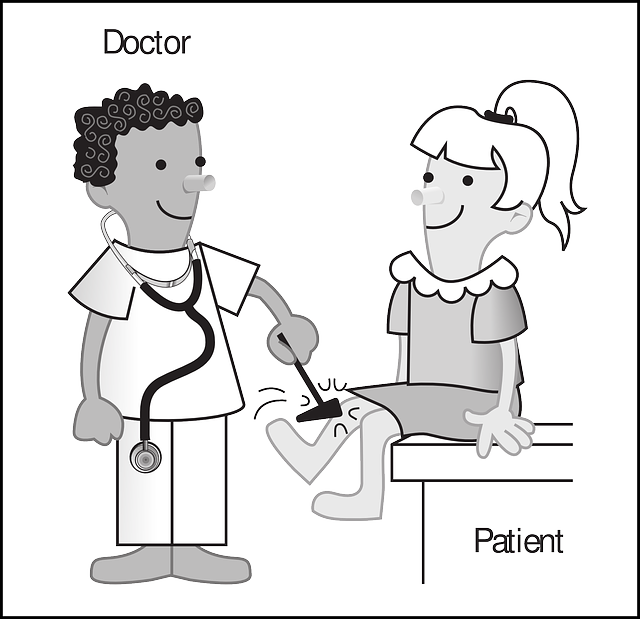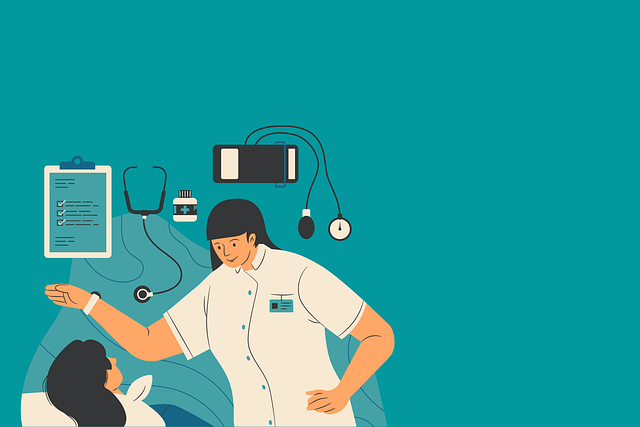Patient no-shows significantly impact healthcare quality and efficiency, driven by poor communication, complex scheduling, and lack of accountability. Automated patient reminders via SMS, email, or phone calls effectively combat this issue by improving attendance rates, reducing wait times, and optimizing resource utilization. These technology-driven systems send personalized notifications, increasing patient engagement and allowing for proactive conflict resolution. Integrating automated reminders streamlines administrative tasks, enhances healthcare delivery efficiency, and improves patient adherence to scheduled appointments. Measuring success through attendance rates and ROI analysis highlights the value of automated patient reminders in enhancing patient experiences and operational efficiency.
In the quest to optimize healthcare delivery, reducing patient no-shows is paramount. This article explores the power of automated patient reminders sent via SMS, email, or calls as an innovative strategy to combat this issue. We delve into the causes and impact of no-shows, the effectiveness of automated systems, and the optimal channels for engagement. Learn how personalized reminder content, seamless implementation, and tracking ROI can significantly improve attendance rates and overall healthcare accessibility.
- Understanding Patient No-Shows: Causes and Impact
- The Role of Automated Reminders in Reducing No-Shows
- Effective Channels for Patient Reminders: SMS, Email, and Calls
- Designing Compelling and Personalized Reminder Content
- Implementing and Integrating Automated Reminder Systems
- Measuring Success: Tracking Attendance Rates and ROI
Understanding Patient No-Shows: Causes and Impact

Patient no-shows are a significant challenge in healthcare settings, impacting both patient care and operational efficiency. These missed appointments can be attributed to various factors such as poor communication, complex scheduling, and lack of personal accountability. When patients fail to show up for their scheduled visits, it creates additional barriers for both providers and fellow patients, leading to longer wait times, disrupted workflows, and potentially delayed treatment.
The consequences of no-shows are far-reaching, affecting not only individual clinics but also the broader healthcare system. High no-show rates can result in increased operational costs, reduced revenue, and overburdened staff. Moreover, it hampers the availability of resources, limiting access to care for other patients who could benefit from those appointments. Therefore, implementing effective no-show prevention tools, such as automated patient reminders through SMS, email, or phone calls, is crucial in enhancing attendance rates and ensuring optimal healthcare delivery.
The Role of Automated Reminders in Reducing No-Shows

Automated patient reminders have emerged as a powerful tool to combat no-shows and enhance medical attendance rates. These sophisticated systems utilize technology to send personalized messages via SMS, email, or phone calls, ensuring patients receive timely notifications about their appointments. By automating this process, healthcare providers can efficiently manage scheduling and reduce the likelihood of missed appointments.
The effectiveness of automated reminders lies in their ability to foster patient engagement and accountability. Reminder call services not only serve as a gentle nudge but also provide an opportunity for patients to confirm their attendance, addressing any potential scheduling conflicts or changes in availability. This proactive approach contributes to a medical attendance boost, ultimately benefiting both patients and healthcare providers by streamlining processes and optimizing resources.
Effective Channels for Patient Reminders: SMS, Email, and Calls

In today’s digital age, automated patient reminders through SMS, email, and calls have emerged as powerful tools to combat no-shows and boost attendance rates in healthcare settings. These channels offer direct and immediate communication with patients, ensuring they receive timely notifications about their appointments. SMS reminders, for instance, are highly effective due to their brevity and the fact that most people carry their phones with them at all times. Emails provide a more detailed approach, allowing healthcare providers to include appointment specifics and even links for easy scheduling.
Meanwhile, reminder call services take personalization to the next level by connecting directly with patients over the phone. This method can be particularly beneficial for complex cases or vulnerable patient populations. Integrating these reminder systems into healthcare scheduling can significantly reduce no-shows and improve overall efficiency. Clinic reminder automation, when implemented correctly, ensures better patient engagement while streamlining administrative tasks, ultimately contributing to enhanced healthcare delivery.
Designing Compelling and Personalized Reminder Content

Designing compelling and personalized reminder content is key to improving patient attendance. Automated patient reminders, whether sent via SMS, email, or phone calls, should be crafted with a focus on engagement and relevance. Incorporating dynamic data like patient names, specific appointment details, and even location-based reminders can significantly enhance the impact. For instance, a reminder could state, “Hi Maria, just a friendly reminder that your dental check-up is today at 3 PM in our downtown clinic—a short walk from your favorite coffee shop!”
Personalization goes beyond basic information. Tailoring messages to address potential barriers or reasons for no-shows can increase response rates. This might include acknowledging travel difficulties, offering alternative appointment slots, or providing tips on how to prepare for the visit. For example, a healthcare scheduling reminder could suggest, “We understand traffic is heavy today; would you like us to reschedule for tomorrow morning?” Using these strategies within clinic reminder automation ensures patients feel heard and valued, thereby boosting their likelihood of attending appointments as scheduled.
Implementing and Integrating Automated Reminder Systems

Implementing automated patient reminder systems is a strategic move for healthcare providers to enhance appointment adherence and minimize no-shows. These sophisticated tools send timely SMS, email, or phone call reminders, ensuring patients are well-informed about their upcoming appointments. By integrating such systems into existing healthcare scheduling processes, medical practices can streamline communication and improve overall efficiency.
Automated reminder services act as powerful no-show prevention tools, leveraging technology to create a seamless patient experience. They not only reduce the administrative burden on staff but also foster better patient engagement. With automated healthcare scheduling reminders, patients are more likely to keep their appointments, leading to improved attendance rates and optimized resource utilization.
Measuring Success: Tracking Attendance Rates and ROI

Measuring success is an integral part of any effective patient engagement strategy. In the context of automated patient reminders, tracking attendance rates becomes a powerful metric to gauge the impact and efficiency of these technologies. By comparing attendance data before and after the implementation of SMS, email, or call reminders, healthcare providers can quantify the medical attendance boost. This simple yet profound shift in numbers can highlight the success of clinic reminder automation.
Additionally, Return on Investment (ROI) analysis is essential to understand the broader implications. Healthcare scheduling reminders not only influence patient attendance but also contribute to streamlined operations and cost savings. By monitoring key performance indicators, such as no-show rates, appointment rescheduling frequency, and overall revenue impact, healthcare organizations can demonstrate the value of automated patient reminders. This data-driven approach ensures that resources are allocated efficiently, enhancing the overall patient experience and improving operational efficiency.
